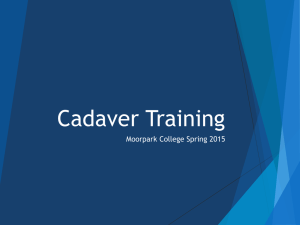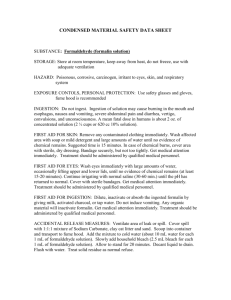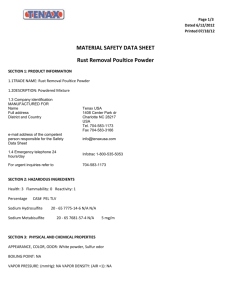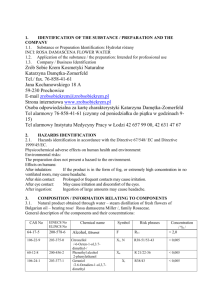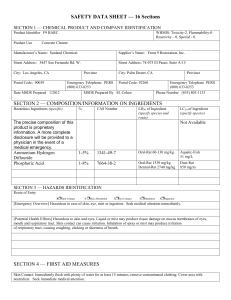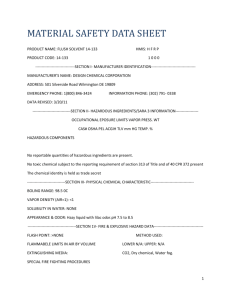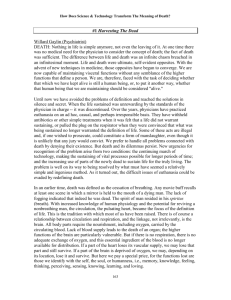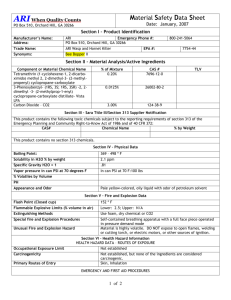Cadaver Tank Cleaning SOP - 34-601ClinicalAnatomy
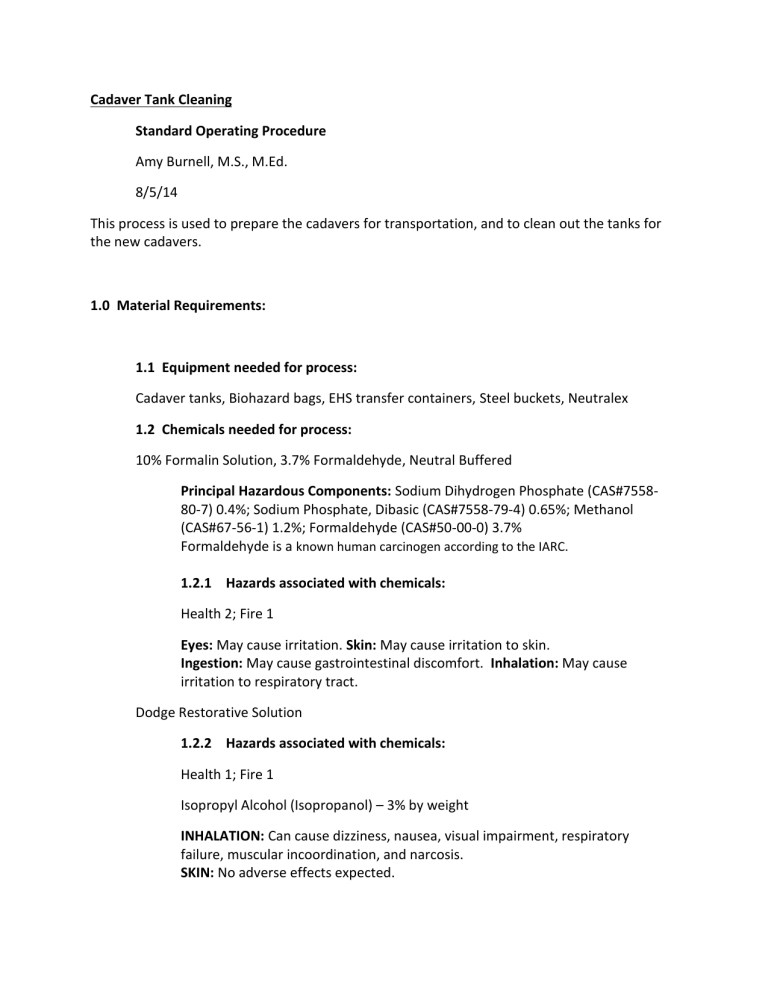
Cadaver Tank Cleaning
Standard Operating Procedure
Amy Burnell, M.S., M.Ed.
8/5/14
This process is used to prepare the cadavers for transportation, and to clean out the tanks for the new cadavers.
1.0
Material Requirements:
1.1
Equipment needed for process:
Cadaver tanks, Biohazard bags, EHS transfer containers, Steel buckets, Neutralex
1.2
Chemicals needed for process:
10% Formalin Solution, 3.7% Formaldehyde, Neutral Buffered
Principal Hazardous Components: Sodium Dihydrogen Phosphate (CAS#7558-
80-7) 0.4%; Sodium Phosphate, Dibasic (CAS#7558-79-4) 0.65%; Methanol
(CAS#67-56-1) 1.2%; Formaldehyde (CAS#50-00-0) 3.7%
Formaldehyde is a known human carcinogen according to the IARC.
1.2.1
Hazards associated with chemicals:
Health 2; Fire 1
Eyes: May cause irritation. Skin: May cause irritation to skin.
Ingestion: May cause gastrointestinal discomfort. Inhalation: May cause irritation to respiratory tract.
Dodge Restorative Solution
1.2.2
Hazards associated with chemicals:
Health 1; Fire 1
Isopropyl Alcohol (Isopropanol) – 3% by weight
INHALATION: Can cause dizziness, nausea, visual impairment, respiratory failure, muscular incoordination, and narcosis.
SKIN: No adverse effects expected.
EYE CONTACT: Exposure to high vapor concentrations, or contact with liquid causes redness and irritation.
INGESTION: Causes irritation of the gastrointestinal tract, nausea, vomiting, and diarrhea.
1.3
Engineering controls:
Continuous negative airflow in the lab is maintained by an exhaust fan and two air scrubbers designed for this purpose.
1.4
Protective equipment needed:
Nitrile gloves, safety goggles, and lab coats.
1.5
Administrative controls:
This SOP is to be read by all students that will be performing this procedure.
The safety data sheet for formalin solution must be read by all students as well prior to performing the work.
All TA’s, instructors, and other employees working in this lab must be up-to-date with the EEM-EHS lab safety training which is required on an annual basis.
All TA’s, instructors, and other employees working in this lab must be up-to-date with
EEM-EHS or CITI biosafety/bloodborne pathogen training on an annual basis.
2.0
Procedure:
1.
The instructor will turn on the air scrubbers.
2.
The cadaver tanks will be opened and the cadavers exposed.
3.
The cadavers will be put into the body bags and placed on the dissecting tables.
4.
Steel buckets will be placed under the cadaver tank drains and the drains will be opened.
5.
Any liquid that flows out of the tanks will be neutralized with Tissue-Tek Neutralex
(procedure found on Neutralex container or on the website).
6.
Neutralized liquid will be disposed of in sealed containers through the satellite accumulation area.
7.
Each tank will be rinsed with one bucket of water and liquid will again be neutralized with Neutralex before disposal.
3.0
Storage:
The embalming solution for cadavers is not stored in the lab. Neutralex powder is not a hazard, but is stored in a floor level cabinet.
4.0
Waste Products:
All waste accumulated during this procedure will be disposed of following the biohazard waste
Standard Operating Procedure. Any waste containing formalin solution must be disposed of as a chemical hazardous waste. If the waste contains biohazardous materials and formalin solution, this is considered a mixed waste. Contact Kathi Lyon at 42746 for more information regarding proper disposal of mixed waste.
5.0
Accident Procedures:
5.1
Contact
5.1.1
Skin: Remove contaminated clothing immediately, wash with soap and plenty of tap water for 15 minutes. A buddy in the lab can call 44911.
5.1.2
Eyes: Rinse with water for 15 minutes. Seek medical advice. A buddy in the lab can call 44911.
5.1.3
Inhalation: Remove from contaminated area. Restore breathing.
5.1.4
Ingestion: Do not induce vomiting: seek medical advice immediately and show SDS. If swallowed, rinse mouth with water (only if the person is conscious). Call 44911.
1.1
Spill or leak: Ventilate area, eliminate all sources of ignition, remove all nonessential personnel. Spills can be cleaned with proper protective equipment and absorbent material if proper training on how to clean up spills has been received.
Once absorbed, containerize for disposal. If there has been no training on spill clean-up or absorbent material is not available, please evacuate the lab and call
44911. The UMass Lowell Police Dispatch will then be able to contact EEM-EHS to respond for spill clean-up.
1.2
Fire: Avoid heat and sources of ignition. In case of fire, evacuate the lab and pull the nearest fire pull alarm station.
